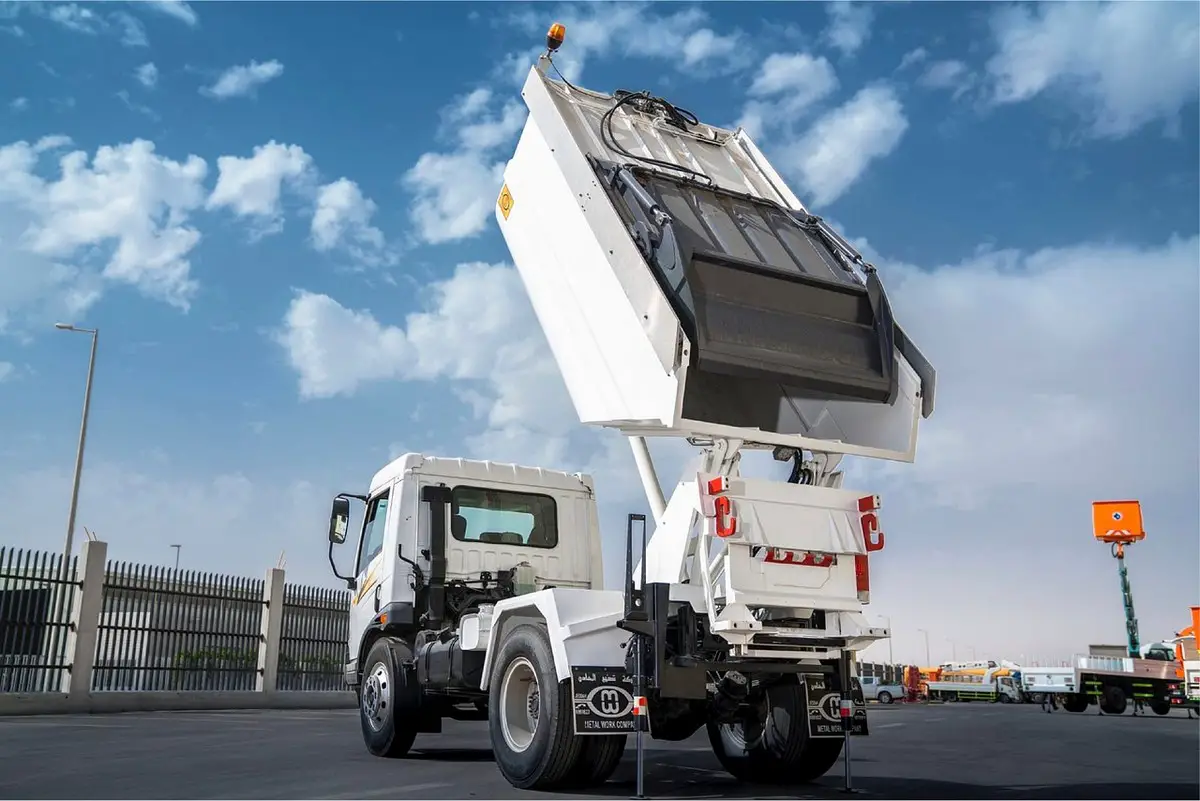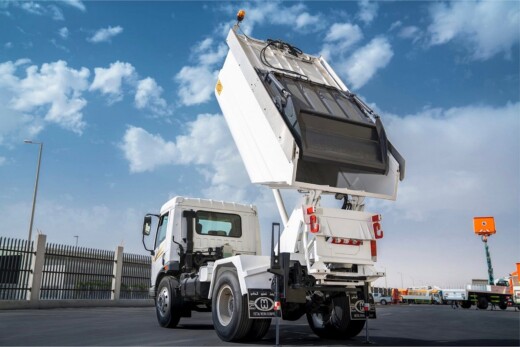Architecture meets waste management tips, Building Information Modeling advice, Property computer design guide
Architecture Meets Waste Management: A Guide
21 February 2024
The age of conscious architecture has arrived. As eco-awareness takes hold and climate threats loom, priorities have shifted for architects and urban developers alike. Read on and explore innovative ways in which the building sector, known for sizable waste streams and emissions historically, is embracing radical sustainability in structural design and construction.
From upcycling unwanted scrap to integrating organic forms and renewable technologies, visionary solutions prove the built environment can nurture rather than harm while still serving human needs. By reimagining materials streams and life cycles through an eco-conscious lens, architects are lifting you towards a regenerative future in synchrony with the planet.
Recycling in Architecture
Architects now incorporate recycled materials into building design for financial and emissions-lowering benefits. By sourcing recycled goods rather than new resource extraction, greenhouse outputs are cut. Outdated vehicles, glass, or planes find second lives as architectural accents, proving waste can transform into creative elements while advancing sustainability.
Experimentation with unconventional supplies like recycled plastic and cardboard opens doors for stable, safe green building materials. With thoughtful design, recycled items provide aesthetics and ecology in tandem, reducing carbon footprints.
Concepts of Green Architecture
The idea behind green architecture extends beyond just utilising recycled materials. It aims to minimise the negative environmental impact throughout the life cycle of a building.
This involves designing structures that consume less energy during both construction and operation through choices like passive solar building design and using renewable energy such as wind or solar power. But it doesn’t stop there; green architects also consider how the structure will blend with or benefit the local environment.
Apart from environmental protection, green architecture also enhances air quality and indoor environments which significantly boosts occupant health and comfort. This approach ensures a structure is sustainable – financially, environmentally and socially.
War on Waste Data Analysis
The war against waste requires fact-based strategies derived from careful data analysis. Architects and urban planners must analyse the various kinds of waste generated at different stages of a building’s life cycle and devise waste management solutions accordingly.
By analysing patterns in waste production, innovators can determine some of the main contributors to waste. Then they can build models forecasting future waste trends which assist in forming strategies for waste reduction, reuse or recycling.
Utilising insights when they check out “war on waste” data helps architects integrate specific architectural elements and designs that minimise future waste creation while maximising resource efficiency.
Avoiding Architectural Wastage
Waste avoidance begins at the design stage. It involves making conscious choices that will reduce resource consumption and unnecessary wastage while planning architectural projects.
For instance, by opting for flexible layouts that can be easily adapted in future without significant remodelling can considerably lower construction and demolition waste. Similarly, installing efficient water systems minimises water usage while still catering to user needs effectively. These steps prevent excessive consumption and waste production in the first place.
By placing a greater focus on durability, adaptability, and modularity in design, structures can stand the test of time.
Material Reuse in Construction
No longer are construction materials viewed as single-use entities. Plenty of construction materials can be recycled and reused including metal, bricks, concrete, and certain types of plastic. Even soil, excavated from the foundations, is being repurposed in other areas of site development.
By minimising new resource acquisition and landfill usage, this practice saves both money and the environment. Reduced transport emissions and extended lifetimes of quarries are added bonuses in favour of reuse strategy.
It’s a wave of change that is slowly but surely propagating throughout the architectural arena worldwide – proving old could quite well be the new ‘new’.
Repurposing Building Debris
Architectural projects invariably generate debris – from wrecked buildings to construction remnants. Repurposing such debris is a prominent strategy in sustainable architecture and can take many different forms.
For instance, crushed construction debris can be used for landscaping, road construction or even as aggregate in new concrete. Reclaimed wood can serve as flooring, while materials like glass and metal can be melted down and reshaped into new products.
This approach of repurposing transforms potential landfill contributors into valuable resources, contributing towards circular economies, reducing need for fresh resource extraction, and lowering overall project costs.
Innovative Waste Technologies
Technology plays a pivotal role in resolving environmental woes. New innovative technologies play a significant role in managing architectural waste more efficiently.
Waste-to-energy technology transforms construction and demolition waste into reusable energy. Advanced sorting systems facilitate segregation and recycling of mixed construction wastes at source. Meanwhile, digital platforms enable efficient matching of surplus materials with projects seeking them.
A blend of architecture with cutting-edge technologies ensures that future cities morph into eco-friendly urban habitats with minimised waste and maximised sustainability.
Nature-Inspired Construction Approaches
Nature has always been an inspiring muse for architects. However, the focus now is not just to incorporate elements of nature aesthetically but to design buildings in harmony with natural processes – popularly known as ‘biomimicry’.
Architects are turning to designs that mimic natural structural forms, materials or energy flows for maximum efficiency. For instance, building designs inspired by termite nests for efficient ventilation or the honeycomb for strength and stability.
Such nature-inspired architectural solutions not only align with environmental sustainability but also provide superior functionality and performance.
Sustainable Buildings and Cities
Sustainability now forms the bedrock of urban planning with cities envisioned as living systems. Planners are reinstating green spaces amidst concrete jungles, harvesting natural light and wind patterns, capturing rainwater and leveraging renewable energy sources.
Beyond individual buildings, even urban infrastructures like transport systems are being reimagined for lower emissions. Each urban element is designed in tandem with others, ensuring lesser resource consumption and waste production at every turn.
The objective is to create habitats that bequeath a minimum eco-footprint while providing maximum liveability – paving way for truly sustainable cities of the future.
Landfill Site Transformations
Traditionally viewed as dumping grounds, landfill sites are today envisaged as opportunities for architectural innovation. Across the world, there are instances of vacant landfill sites being transformed into recreational parks, wildlife habitats, renewable energy sites or even residential spaces.
Such transformations need careful strategic planning to mitigate potential risks but when done right, they result in multi-functional spaces that present economic, ecological and social benefits all at once.
It exemplifies how efficient waste management techniques coupled with thoughtful design can reclaim degraded lands into functional urban tapestries.
Next Steps for Sustainability
Architects and planners now focus on innovations enabling comprehensive resource conservation and recyclability in design, supported by legal mandates. Widespread adoption of circular economic principles across construction is critical too.
The vision includes integrated community recovery systems and upcycling facilities. However, even robust onsite recycling will still require services like Same Day Rubbish Removal to responsibly manage discarded materials contaminated beyond reuse or lacking current recycling capabilities.
Comprehensive planning factors in these inevitable discards, ensuring smooth connections to waste managers for responsible residual processing. Through closed-loop usage alongside sustainable residual strategies, cities can inch closer to sustainability goals in sync with inhabitant needs – constructing environments sustaining equilibrium with nature.
Architecture meets waste management – To Summarise
As diverse fields of architecture and waste management may seem initially, their integration forms a critical aspect of your sustainable future. By viewing construction materials as valuable resources rather than disposable entities and by creating buildings which consider waste management from the design stage itself – architects are reinventing modern cityscapes.
Amidst looming threats of climate change and resource scarcity, such an approach offers much needed hope for a greener, sustainable future in harmony with the planet.
Comments on this guide to Architecture meets waste management article are welcome.
Edinburgh Architecture
Contemporary Scottish Capital Property Designs – recent architectural selection below:
What is BIM in construction guide
Comments / photos for the Architecture meets waste management guide page welcome.





